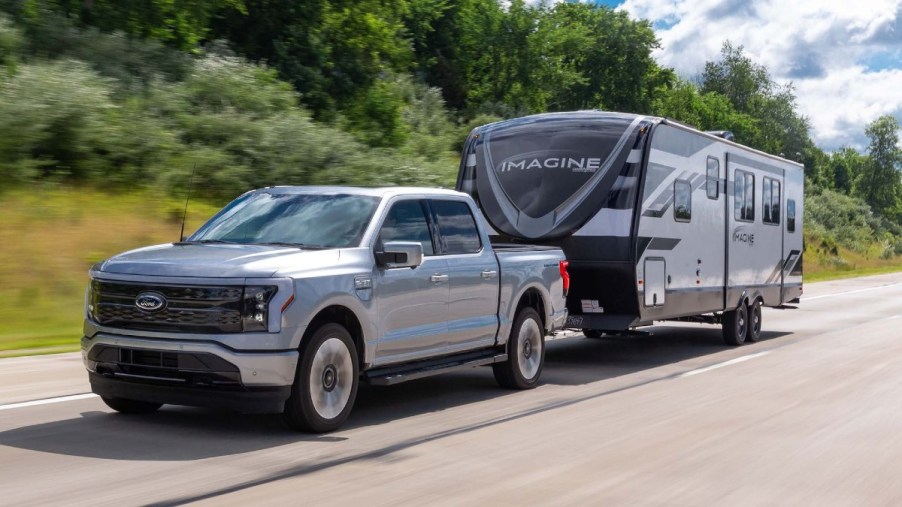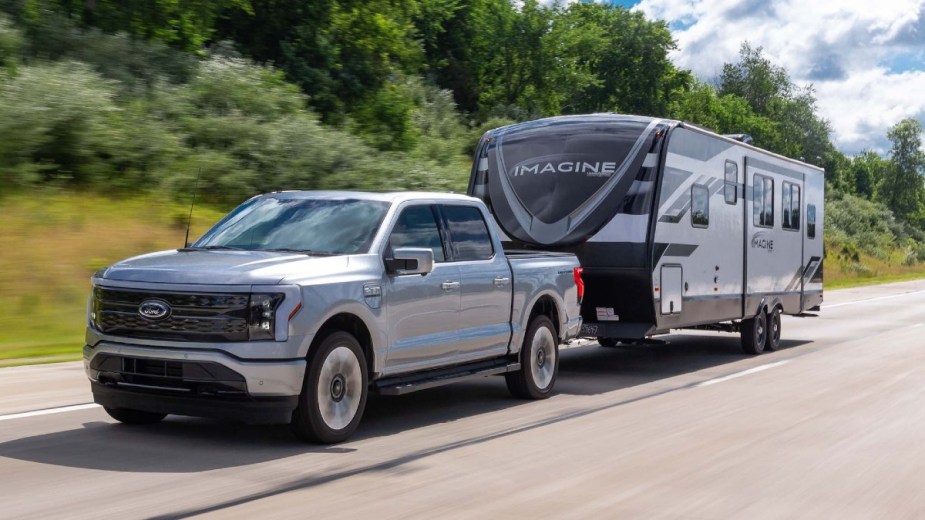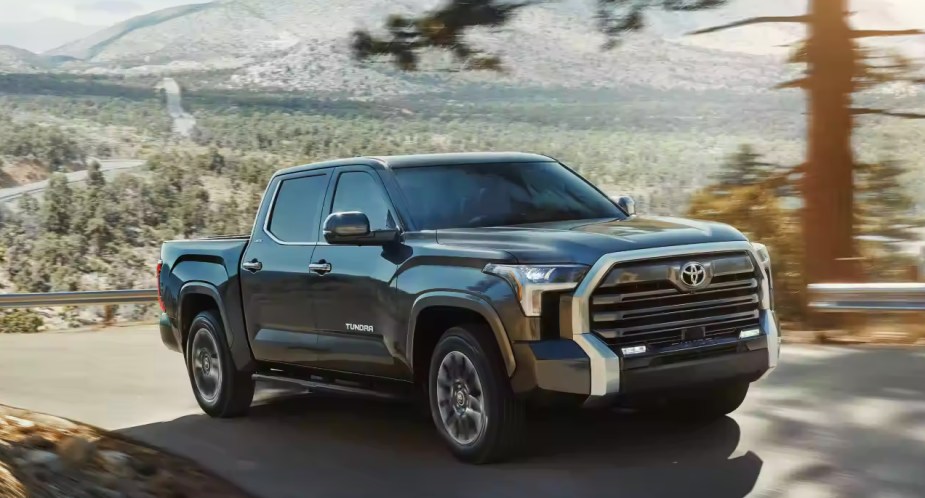
3 Reasons to Wait Before Buying a Full-Size Truck
Are you interested in getting a new full-size truck in 2023? There are a few significant reasons to wait. Models like the 2023 Ford F-150 and 2023 Ram 1500 are tempting for a number of reasons. However, it might be best to wait it out because it’s not the best time to get a new pickup. Here are three reasons to wait before buying a full-size truck.
1. New all-electric models are on the way

We recommend waiting to get a new full-size truck because brand-new all-electric models are on the way. While new combatants in the pickup arena, like the Tesla Cybertruck and the Lordstown Endurance, are enticing, brands truck owners are loyal to will release EVs too. For example, an all-electric Ram, Chevy Silverado, and more. Not only will new electric models mean consumers have more options, but competition is always good for prices. Models like the Ford F-150 Lightning that are already available will make changes in an attempt to stay competitive.
New EV models also usually mean automakers release brand-new features. After all, a new powertrain isn’t always enough to sell a truck. That means some new features could leak into standard gas-powered models from the EVs. As a result, traditional pickup owners will reap the rewards, getting new exciting features for their old, trustworthy models.
2. More hybrid powertrains

Some full-size trucks already have a hybrid powertrain in their lineup. It might be best to wait before getting one because more are on the way. We already know the Ford F-150 and Toyota Tundra have hybrid options, but did you know the Ram 1500 will soon offer a hybrid option? Although unconfirmed, we wouldn’t be surprised to see the popular Chevy Silverado and GMC Sierra models get a new hybrid powertrain soon.
Hybrid powertrains are for more than just fuel economy, especially with full-size trucks. For example, the Toyota Tundra averages slightly better miles per gallon with its Hybrid Max setup. However, it also gets a boost in performance. The standard Tundra engine is a 3.5-liter V6, good for 389 horsepower and 479 lb-ft of torque. Alternatively, Tundra owners can get the same engine paired with a battery-electric hybrid system, boosting those numbers to 437 hp and 583 lb-ft. What pickup owner doesn’t want more power and lower fuel costs?
3. Shortages are still causing problems
As recently as a few months ago, multiple sources, like Cars.com, reported that Ford factory parking lots were filled with unfinished F-150 models. The same can be said of many other full-size trucks, which is another reason to wait. Not only do the supply chain shortages cause a lack of inventory, but other problems as well. There is a chance some models will not be equipped with all the features that are usually promised. For example, some automakers have nixed heated seats or other functions.
Dealers have to be transparent with models that are missing features because of the shortages. However, consumers must do their due diligence to ensure they’re not surprised by missing equipment. Until these problems are hashed out a bit better in the future, it could be better to wait.
Wait before buying a full-size truck
In conclusion, it’s probably best to wait before getting a full-size truck. Although the Ford F-150, Ram 1500, and Chevy Silverado are some of the most popular vehicles in America, the pickup segment is going to improve soon. Many more all-electric models are coming, meaning more variety, options, and fewer fuel costs. Next, almost every well-known model will soon have a hybrid powertrain option in its lineup. Finally, supply chain shortages are still causing issues with both inventory numbers and missing features. For these reasons, waiting might be the best policy.



